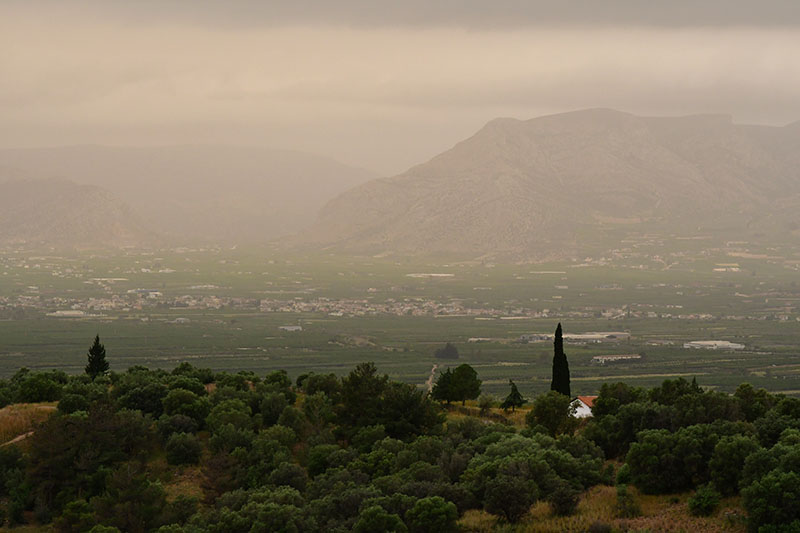
Mycenae is the ancient archeological site near Mykines in Argolis, Greece. It’s a fascinating place to visit when you learn about its connection to the ancient Greek history. What seems to be a myth today was a reality in some 16th century BC. This is a place of one of the oldest known cultures in the world- the Mycenaeans. They wrote in Linear B text, the cyclopes built walls and people worshiped the Earth goddess. Perseus founded Mycenae and Agamemnon, king of Mycenae, set out against Troy in the Trojan War. Thanks to independent excavations of an adventurer and explorer, Heinrich Schliemann in 1876, Mycenae got unearthed to us today. Mycenae is located about 120 km (75 miles) south-west of Athens, near Argos. Corinth is about 48 km (30 miles) away from it. The site stands on a beautiful mountain rising 900 feet (274 meters) above the sea level. The collapse of the Mycenaean civilization happened around 1100 BC.
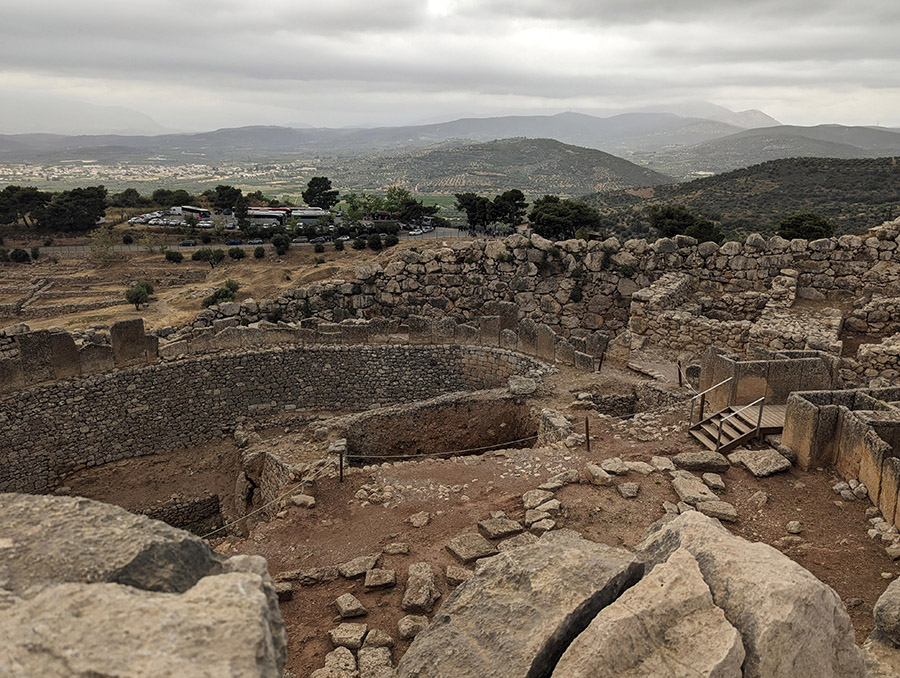
While you can view some artifacts from these excavations in a nearby archeological museum, other items are on display at the museum in Athens. I’m placing pictures about the Mycenean culture from both museums here. I also put some pictures of the local landscape and excavations in the area for you to see how it looks like today. Some pictures look orange and it’s not because of a fancy filter. When we visited Mycenae, the sky turned orange and a rain of sand drops covered the entire landscape as far as we could see. It turned out, it was due to the Sahara dust storm that moved with the wind turning everything orange. The sand covered trees, cats and us. 🙂 The historic descriptions of the place you’ll see below come from the area and museums I visited there.

Fact or Myth #1: Perseus found Mycenae
According to Greek legends, Mycenae was founded by Perseus, son of the god Zeus, and the human princess Danae. King of Argos, Perseus beheaded the gorgon, Medusa who turned men to stone. The legend tells a story that Perseus after fulfilling the prophecy that he would kill his grandfather Acrisios, exchanged the kingdom of Argos for that of Tiryns and then founded Mycenae, a new city for himself.
"It's known to the Greeks, that Perseus founded Mycenae……." Pausanias, II, 15,4
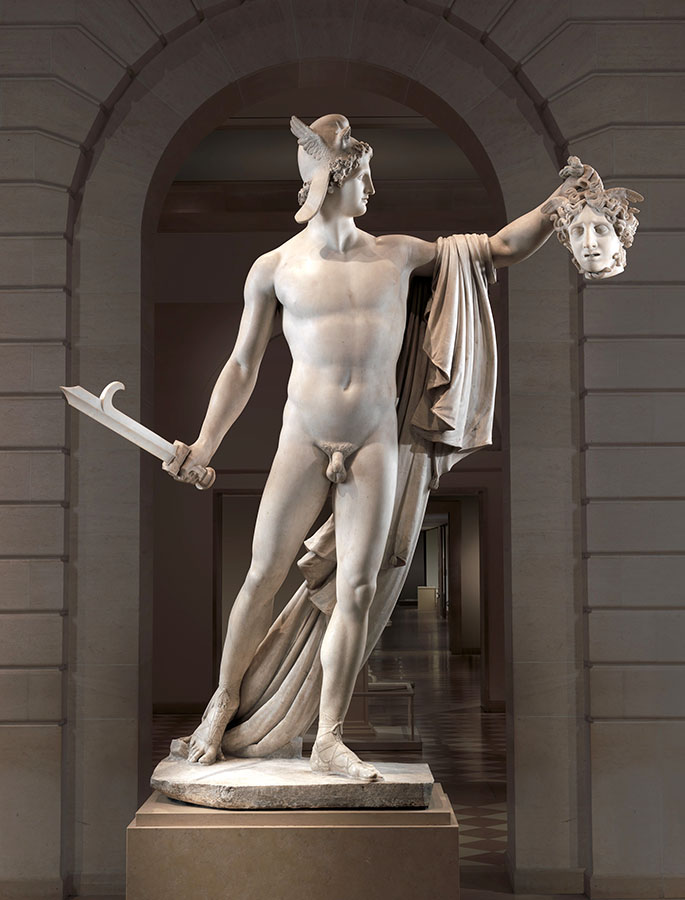
Where does the name ‘Mycenae’ come from? There are at least 3 explanations given for this name.
1. It comes from Perseus’ sword pommel that he dropped in this place. The sword had a mushroom shape (mykes).
2. It comes from an actual mushroom that Perseus picked up to drink from when he was thirsty. It caused a spring to well up (Perseia spring).
3. Homer derives the name from Mycenae, a nymph of great beauty but of uncertain origins. The Perseid dynasty ruled over Mycenae and its territories for at least three generations. Eurystheus, the last of the line, was the king for whom Hercules performed his famous twelve labors. When Eurystheus was killed in a battle against the Athenians and the sons of Hercules, the people of Mycenae chose Atreus, the son of Pelops, to become their king.
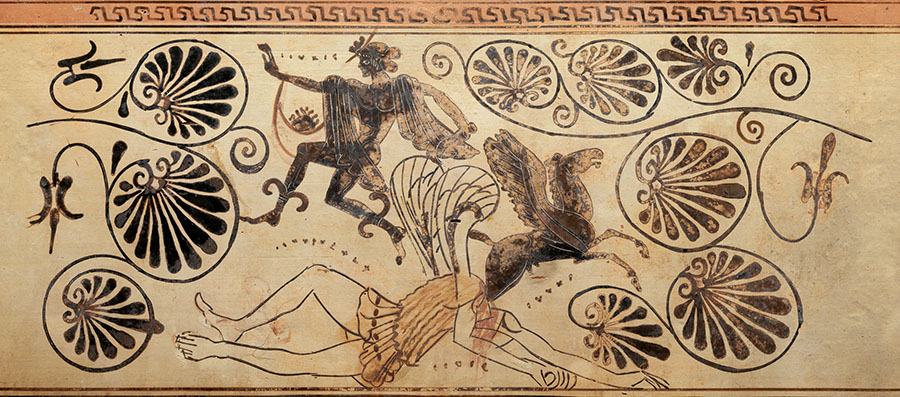
Fact or Myth #2: Perseus employed Cyclopes to build the walls
To fortify his city, Perseus employed the mythical “Cyclopes” to build the walls and it is from that event the style of gigantic masonry is named “Cyclopean”. So the cyclopean masonry can be seen in the Lion Gate and the North Gate. It’s believed that the cyclopes built the walls around the gate because the weight of these stones is between 20-100 tons!
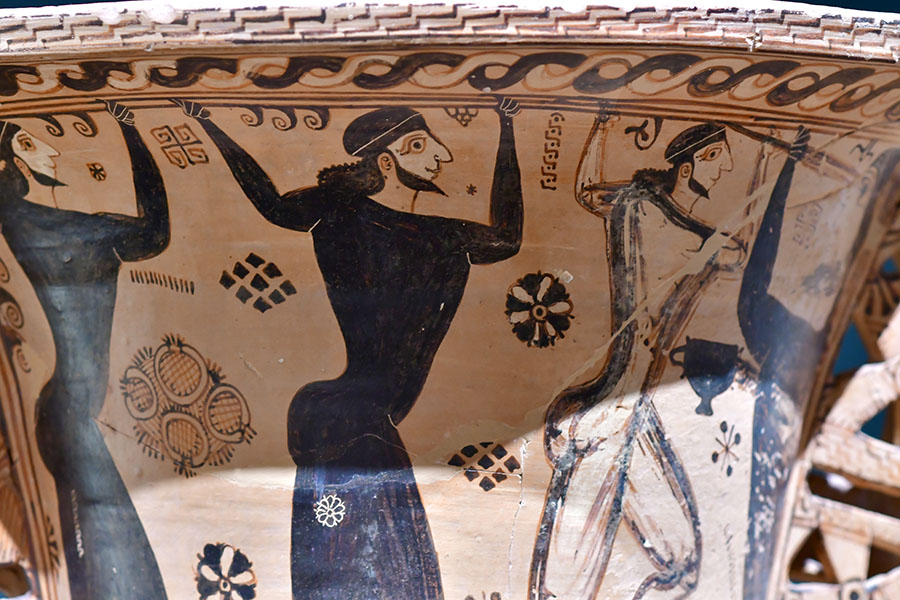
Who are the cyclopes in ancient Greek mythology? Cyclopes are a race of giants with one eye in the middle of their foreheads. Their name comes from the Greek words Kýklōpes, which means “circle-eyes” or “round-eyes”. The Cyclopes are often depicted as unintelligent and work as shepherds. They are known for their extraordinary strength, height, and power. Two of the main myths appear in the works of Homer and Hesiod, 7th-century BCE poets and storytellers. In Theogony, Hesiod describes the Cyclopes as three brothers named Arges, Steropes, and Brontes who were blacksmiths and made Zeus’s thunderbolt. In the Odyssey, the Cyclopes are an uncivilized group of shepherds that Odysseus encounters, including Polyphemus, one of their brothers. In the story, Odysseus and his men get trapped in Polyphemus’s cave after eating and drinking his food. Odysseus eventually blinds Polyphemus by plunging a burning stake into his eye while he’s sleeping, and escapes with six of his friends by clinging to the bellies of Polyphemus’s sheep.
The Cyclopes are also known for building the Cyclopean walls of Mycenae and Tiryns, and for helping the Olympian gods defeat the Titans in the Titanomachy. In gratitude, the gods released the Cyclopes from Tartarus after Uranus imprisoned them for unruly behavior, and the Cyclopes went on to make Hades’s helmet, Poseidon’s trident, and Artemis’s silver bow.
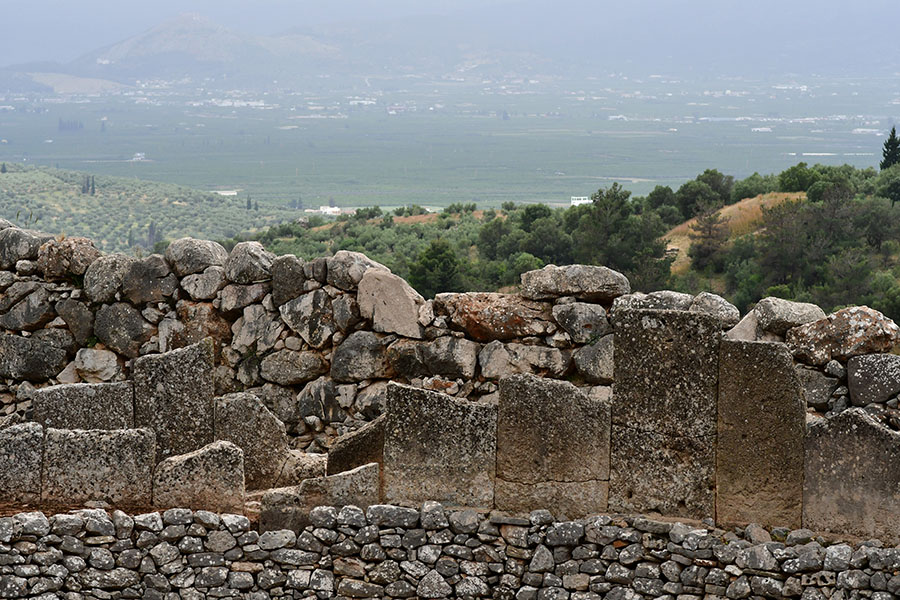
Fact or Myth #3: The Lion Gate mystery reveal
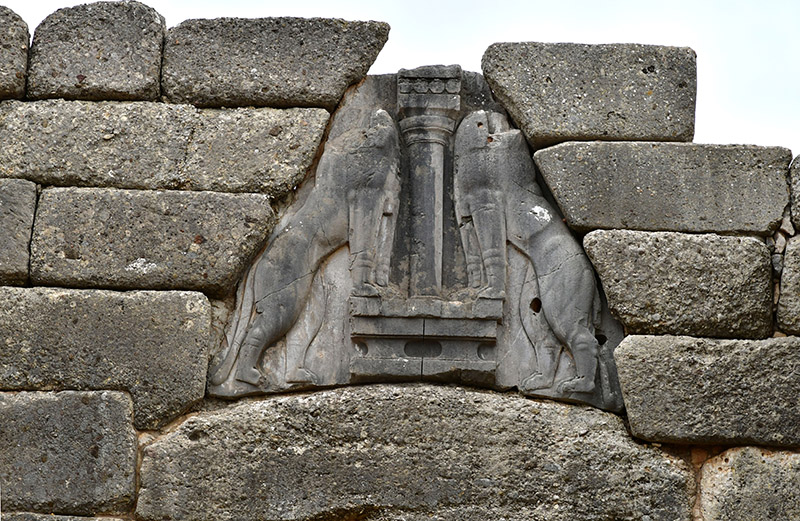
THE LION GATE
The main gate of the Acropolis was constructed in the middle of the 13th century BC. One of its main features is a limestone slab, which fills the area of the “relieving triangle” and bears two lions facing each other in relief. Their front paws lean on two small altars supporting a column. The missing heads were probably made of a different material- steatite. These lions look different and out of place like they were carried from someplace and set in here to make this unusual entrance. This is the earliest example of a monumental sculpture set between the gigantic stones that symbolize the royal house of Mycenae.
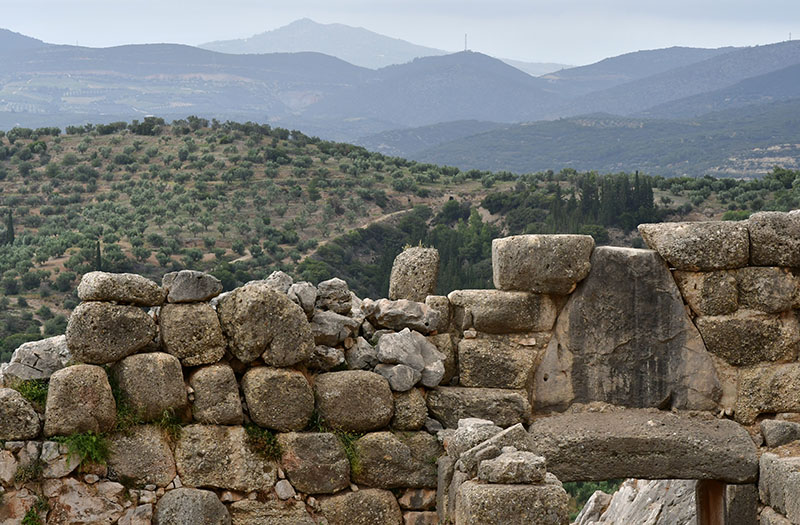
THE NORTH (POSTERN) GATE
It was constructed during the second building phase of the walls around 1250 BC. Four monolithic blocks of conglomerate (‘almond stone’) form the two jambs, the lintel and the threshold. The gate was closed with a double wooden door, bolted by a sliding bar. Instead of a relieving triangle, it has two, plain, vertical slabs set on edge above the lintel, thus transferring the weight to the two doorposts. Inside the gate is a small internal court, from which a road led up to the megaron. The special care with which the two large gates of the citadel were built attests to the Mycenaean masons’ expertise.
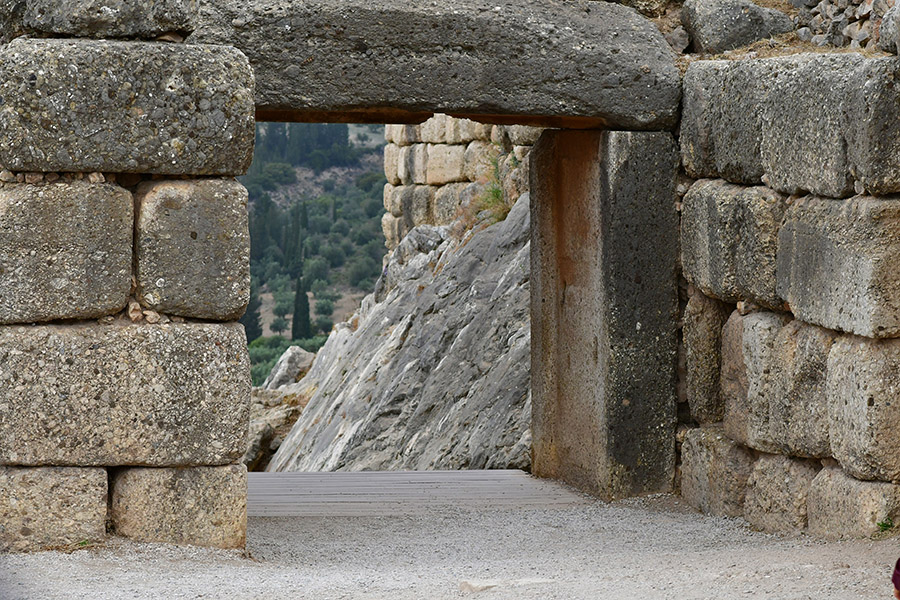
Fact or Myth #4: Discovery of the Agamemnon Shrine of the Mycenean king who fought in the Trojan War
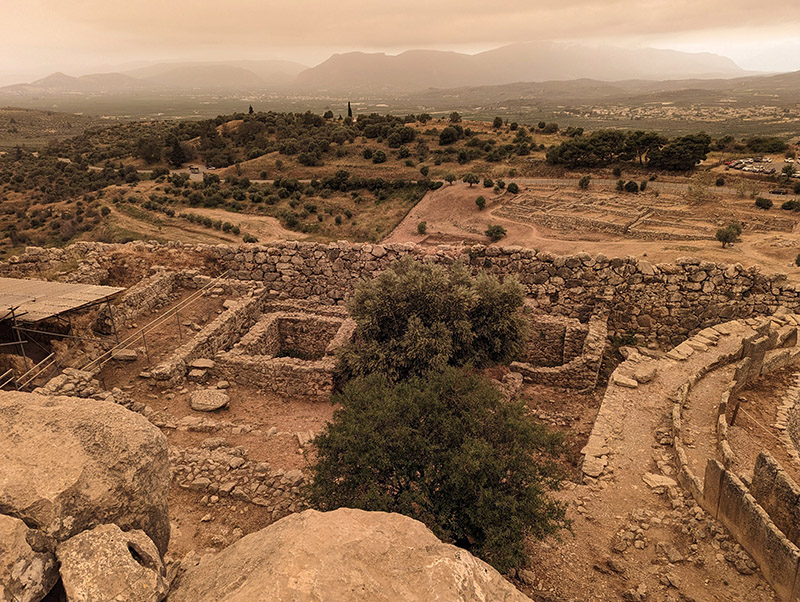
THE AGAΜΕΜΝΟΝΕΙΟΝ
In Greek mythology, Agamemnon was a legendary king of Mycenae who led the Greek army during the Trojan War. Famous for his bravery and military skills, Agamemnon was the son of King Atreus and Queen Aerope, and the brother of Menelaus. He married Clytemnestra, and they had several children, including Iphigenia, Electra, Orestes, and Chrysothemis.
The Agamemnoneion is one of the most important shrines of historical times in the vicinity of Mycenae. It is located approximately 1 km southwest of the Acropolis. Excavations in the area brought to light the architectural remains of a rectangular building that was used from the late Geometric ( 700 BC) to the Hellenistic period ( 2nd century BC). The early form of the shrine remains unclear. However, in the Hellenistic period, the shrine was repaired and transformed into a temenos.
Most of the finds come from an archaic deposit that contained among other finds geometric and archaic Argive pottery and archaic figurines, all of which appear to be offerings to male gods or heroes. Inscribed sherds referring to Agamemnon, have led to the identification of this small sanctuary as a shrine of the hero and protagonist in Homer’s Iliad.
The Trojan War
The Trojan War is the most famous event in Greek mythology that involves a decade-long siege of the city of Troy by the Greeks. Three goddesses, Hera, Athena, and Aphrodite quarreled who was the fairest of them all. Their judge, Paris, the handsome son of the Trojan king Priam, decided in favor of Aphrodite and as a reward, was promised the most beautiful woman in the world, Helen, wife of king Menelaus of Sparta.
The abduction of Helen, Queen of Sparta, by Paris, the Prince of Troy triggered the Trojan War. Helen’s husband, King Menelaus of Sparta, convinced his brother, King Agamemnon of Mycenae, to lead an expedition to Troy to retrieve her. Agamemnon was joined by many Greek heroes, including Achilles, Odysseus, Nestor, and Ajax, and a fleet of 1186 ships and more than 100.000 men from 22 different states set out against Troy under the command of Agamemnon, king of Mycenae.
The ten-year war included many events, such as raids on other cities, single combat challenges, mutinies, and love affairs. The Greeks won many battles and killed the Trojan hero Hector, but they were unable to break through the walls of Troy. Odysseus then devised a plan to trick the Trojans into opening the gates by leaving behind a large wooden horse containing a raiding party. When the Trojans brought the horse into the city, the Greeks opened the gates and sacked Troy, killing the men and taking the women.
The war is told in many works of Greek literature, most notably Homer’s Iliad and Odyssey, which were likely composed in the 8th century BC. The Trojan hero, Hector, was slain by Achilles. Homer’s poem ends there and does not mention Achilles’ death, the stratagem of the wooden “Trojan Horse” and the sack of Troy.
The legends of Mycenae: the house of Pelops
Atreus, son of Pelops, ruled Mycenae. His enmity, towards his brother Thyestes led him to give the unfortunate man the flesh of his own children to eat (the so-called “Thyestean feast”). The deed brought upon Atreus and all his descendants the wrath of the gods and Thyestes’ curse. His son and heir, Agamemnon, was murdered on his return from the Trojan war by his own wife Clytemnestra, assisted by her lover, Aegisthos. Orestes, Agamemnon’s son, and his sister Elektra killed both their mother and Aegisthos. After that, Orestes was forced to flee, pursued by the Fates, until he was finally acquitted by the Areopagus court in Athens. The last king of Mycenae, according to tradition was Tisamenos, Orestes’ son. He got killed while defending his state from an incursion by the descendants of Heracles.
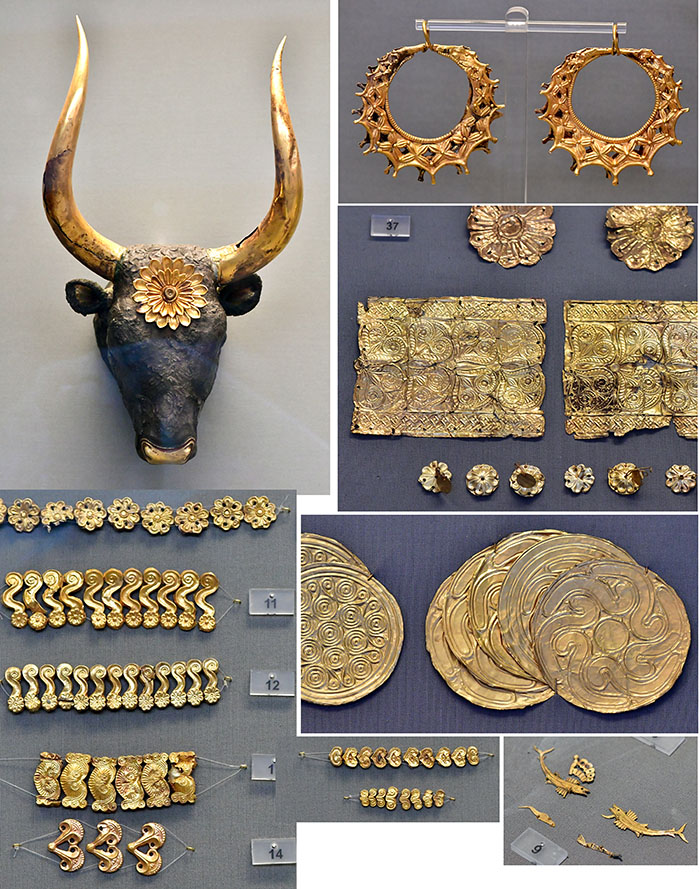
Fact or Myth #5: The Agamemnon’s Gold Mask Mystery
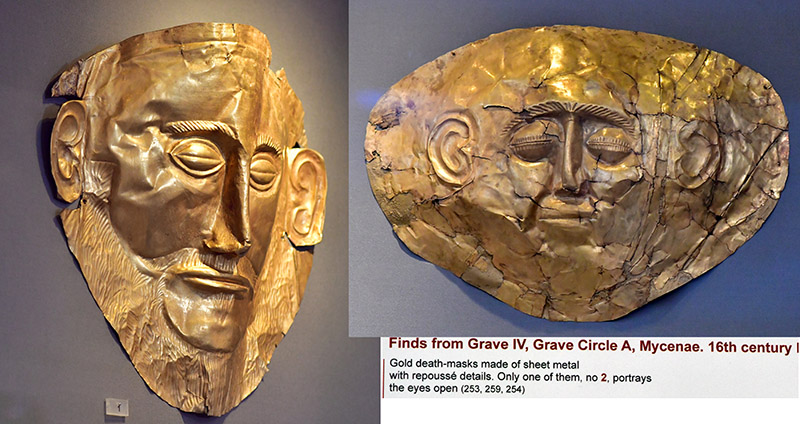
The Mask of Agamemnon is a gold funeral mask that was discovered in 1876 by archaeologist Heinrich Schliemann in the shaft graves of a royal cemetery at Mycenae, Greece (Grave Circle A). This mask was one of several gold funeral masks found laid over the faces of the dead buried in the shaft graves of a royal cemetery. The golden mask is 12 inches tall. Made from a single sheet of pure gold, it was hammered thin over a wooden mold. It’s considered one of the most famous discoveries from the Late Bronze Age as it shows the wealth and craftsmanship of the Mycenaeans at that time. The mask is displayed in the National Archaeological Museum in Athens.
Schliemann named the mask after the famous king of ancient Mycenae, Agamemnon, who is featured in Homer’s Odyssey and Euripides’ plays. The archeologist believed the mask was Agamemnon’s because of its preservation and nobility, and thought it could prove the king’s existence. However, the mask’s origin is up to debate since its discovery. Some art historians and archaeologists believe the mask is not Agamemnon’s because modern research has dated the mask to 1550-1500 BCE, which is 300 years before Agamemnon would have lived.
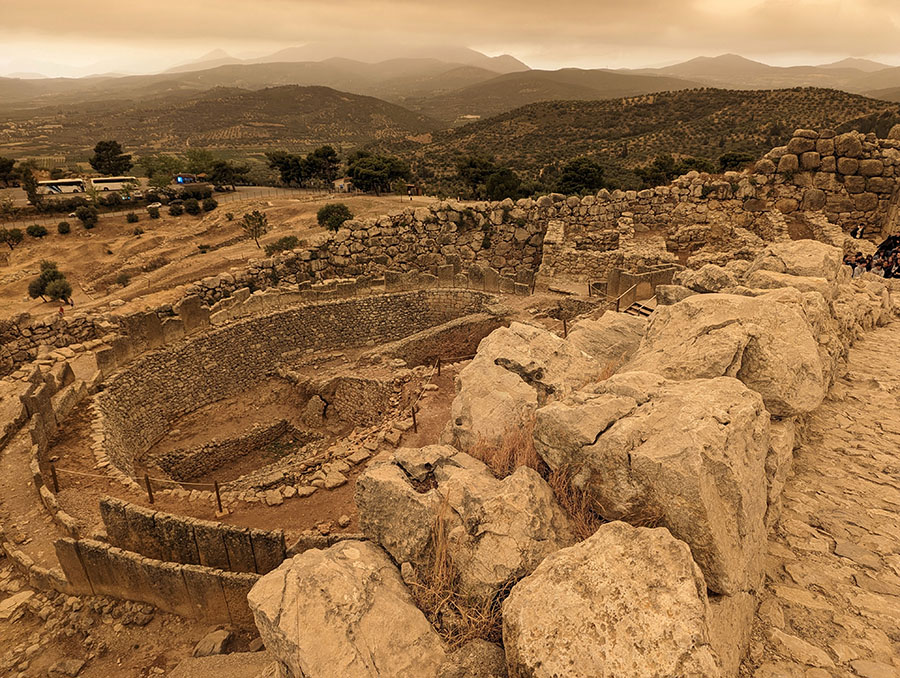
Grave Circle A
Grave Circle A is an extensive cemetery of the Middle Helladic and the early Late Helladic period, which spread west of the citadel. It was used for royal burials exclusively during the 16th century BC. It contained six shaft graves (I-VI), five of which were excavated by H. Schliemann in 1876 and one by P. Stamatakis in the following year. Marked with stone stelai, the graves contained inhumations of family members, luxury grave goods, etc that are on view at the National Archaeological Museum in Athens. Initially, Grave Circle A lays extra muros. Around 1250 BC, however, and with the extension of the cyclopean wall westwards, the royal burial ground appeared within the area of the citadel. The construction of a circular enclosure enhanced the structure.
What is the Helladic Period in Ancient Greece? The Helladic period is an archaeological term used to describe the culture of mainland Greece during the Copper and Bronze Ages, from around 3200–1050 BC. It's divided into three phases: Early, Middle, and Late Helladic. The Late Helladic period is also known as the Mycenaean period.
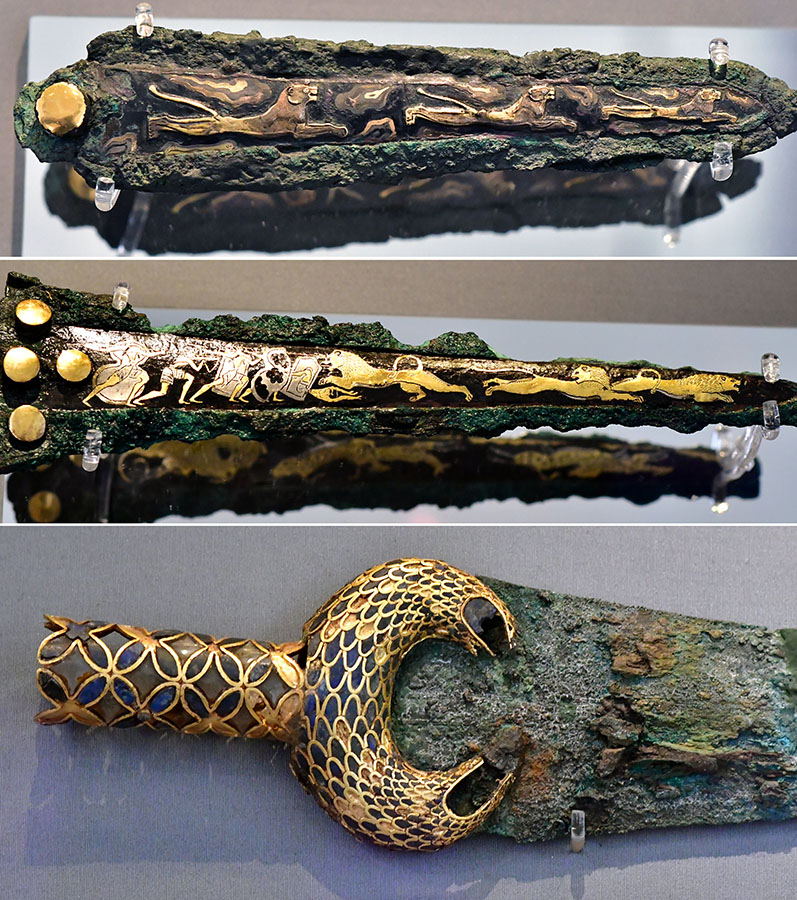
Some Excavated Buildings in the area:
1. The Pylos tholos tombs, 16th-14th centuries BC
The characteristic Mycenaean tholos tombs, with their strange beehive-shaped funerary chamber and long entrance passage, first appeared in Messenia. Two large tholos tombs (Tombs III and IV) were constructed near the palace at Pylos in the 16th century BC. Although looted, they contained many precious grave gifts, which spoke of the rulers’ wealth in this region. (There are the tholos tombs at Myrsinochori (Routsi) found in the area of Pylos, one of the early Mycenean centers in Messenia).
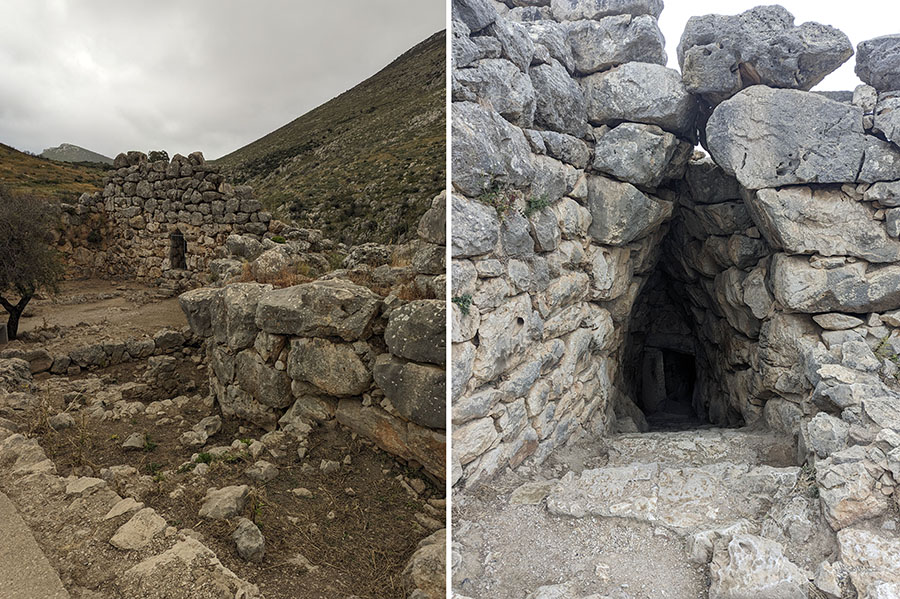
Submycenaean Geometric Period
Although the area of Mycenae was gradually abandoned at the end of the 13th century BC, it was inhabited in the centuries that followed. The submycenaean and protogeometric periods are represented exclusively by burials in the south slope of the Acropolis, in the area of the Tholos tomb of Clytemnestra and Grave Circle B. Evidence of the geometric period comes from a number of houses built over the ruins of the palace as well as pottery both inside and outside of the fortification wall. This fragmentary pottery is probably connected with some kind of hero cult.
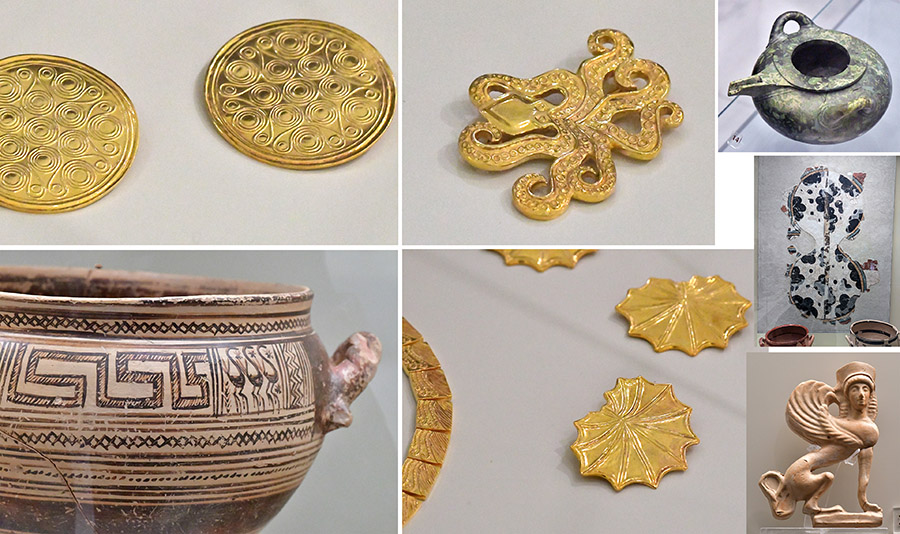
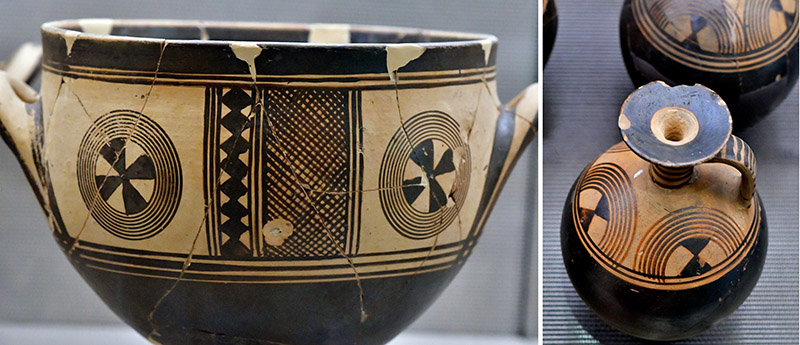
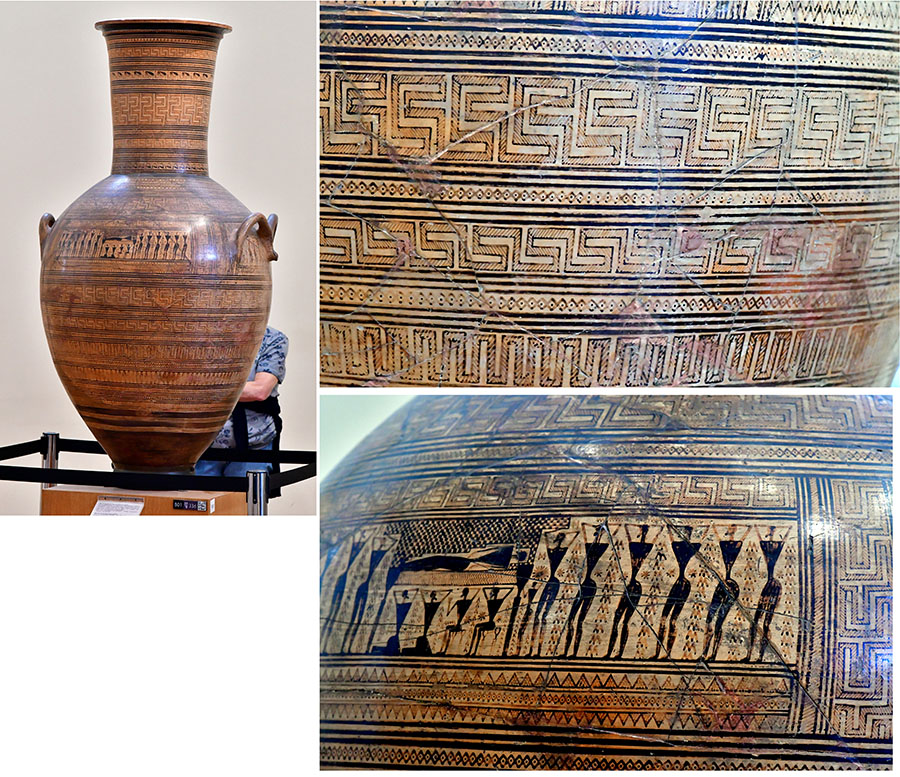
2. House of Columns
The most important building on the east slope of the citadel. At its northwest corner, where the main entrance was situated, are preserved the doorjambs and the threshold of the conglomerate. The house owes its name to the existence of a colonnade in its central courtyard. Destroyed in fire, the building is dated to the second half of the 13th century BC. In the basement and storerooms of this building, archeologists found commercial stirrup jars with a Linear B tablet.
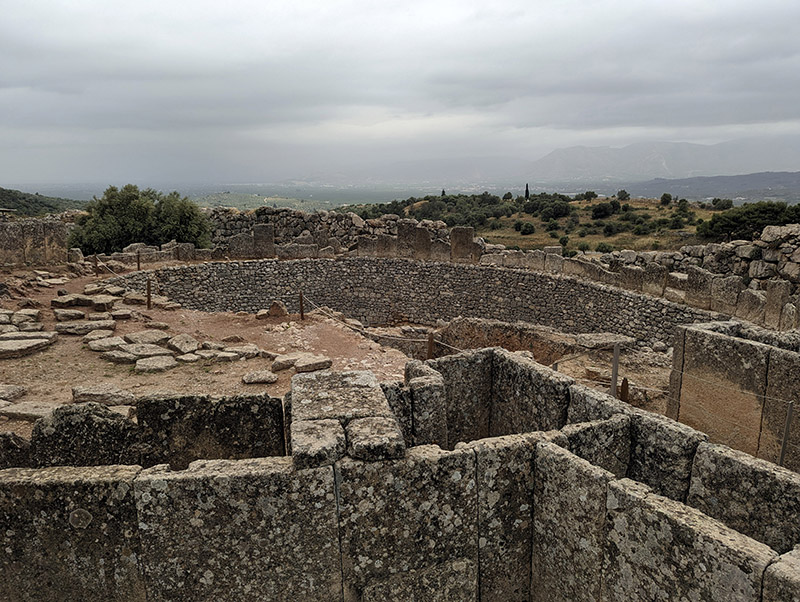
3. Artisan’s Quarter
Together with the House of Columns, the Artisans’ Quarter belongs to the east wing of the palace. This building complex was almost a square in its ground plan. It had two floors with a staircase in its northwest corner. Only the foundations exist here today.
The Artisans’ Quarter has two rows of rooms on both sides of a narrow courtyard with an entrance. The building is known as an artists’ workshop on the basis of excavated objects found here – unfinished ivory objects, raw materials, gold leaf, remnants of semi-precious stones, etc. It dates to the second half of the 13th century BC. It was also destroyed in the conflagration at the end of the century.
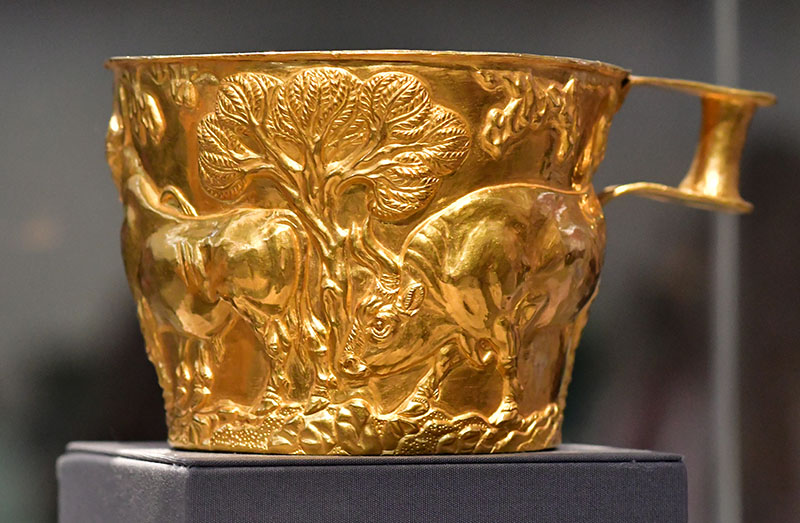
4. Great Ramp & Hellenistic Chambers
Acquiring the form of a wide monumental ramp, the sloping ascent to the top of the citadel appeared in the late 13th century BC. Paved with thin slabs of schist, it was supported by a cyclopean retaining wall. The ramp begins from the inner courtyard of the Lion Gate, follows the incline of the rock, and stops at its south end. At the end of the ramp lies a suite of four Hellenistic chambers. Their function was possibly related to the processing and dyeing of textiles, a common activity of that period.
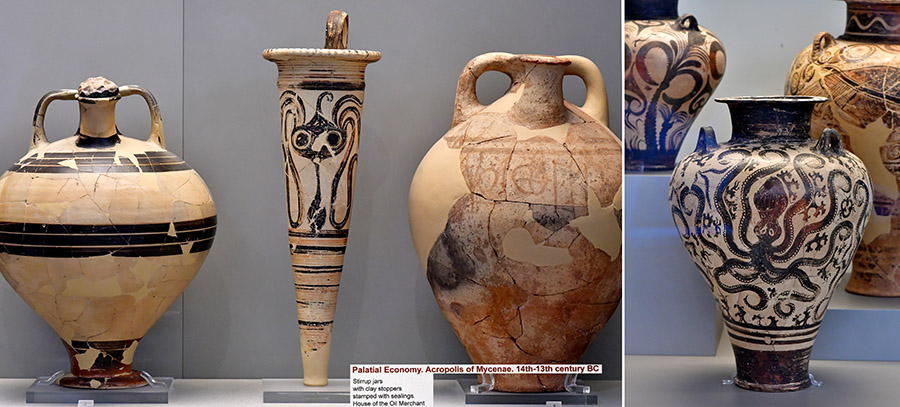
5. Ramp House & House of the Warrior Vase
These two houses are situated to the south of the Grave Circle A. The Ramp House had at least two floors, but only the foundations of the ground floor have survived to today. The House of the Warrior Vase is named after a famous krater decorated with the Mycenaean warriors. The building consists of basements and storerooms as storage jars with carbonized olives and bronze vases were found inside it. Both houses have the burials of the Helladic period, indicating that this entire area was previously a part of the Prehistoric Cemetery, which occupied the west slope of the hill before the fortification walls were constructed.
6. Other houses outside the Grave Circle B.
There is another group of excavated houses that lie outside the city walls. These are the House of Shields, the House of the Oil Merchant, the House of the Sphinxes, and the West House.
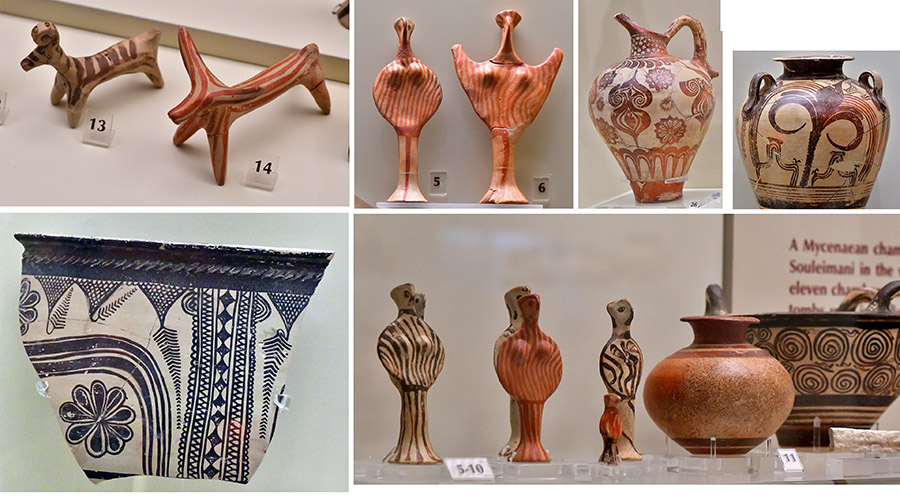
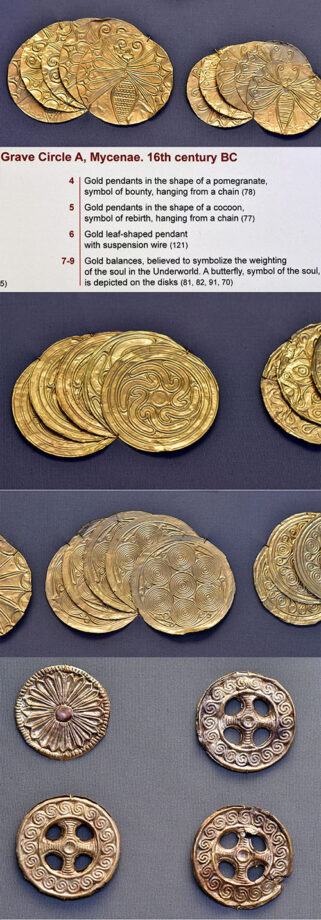
Fact or Myth #6: Linear A and Linear B tablets discovery
According to Wikipedia, during the second millennium BC, there were four major branches: Linear A, Linear B, Cypro-Minoan, and Cretan hieroglyphic languages.
Linear A is a writing system of the Minoans practiced between 1800 BC and -1450 BC on the island of Crete. ( the Minoan civilization preceded the Mycenean one). The Linear A script evolved into the Linear B script, which was used by the Mycenaeans as the earliest form of ancient Greek language. It’s fascinating to learn that modern archeologists and historians still can’t read the Linear A script but they can read the Linear B texts. https://en.wikipedia.org/wiki/Linear_A
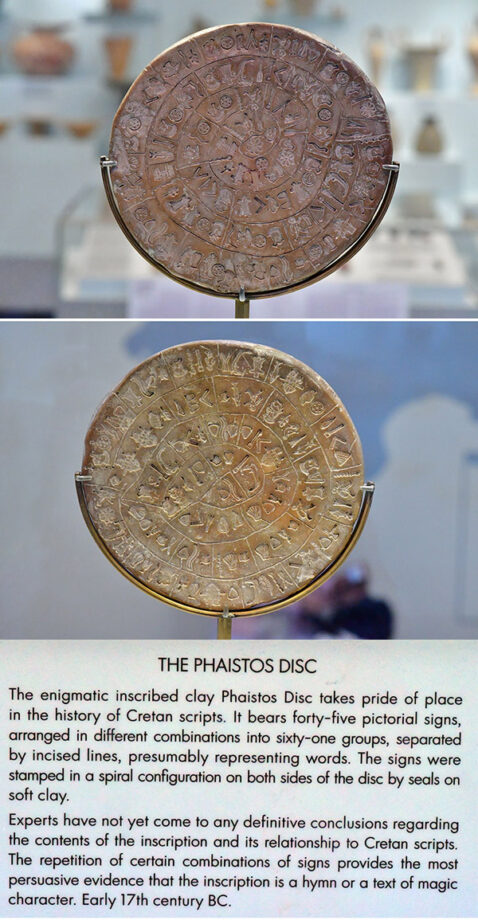
Experts don’t understand the language or this writing in relation to Cretan scripts. The repetition of some combinations of signs suggests that the inscription is either a hymn or a magical text created in the early 17th century BC!
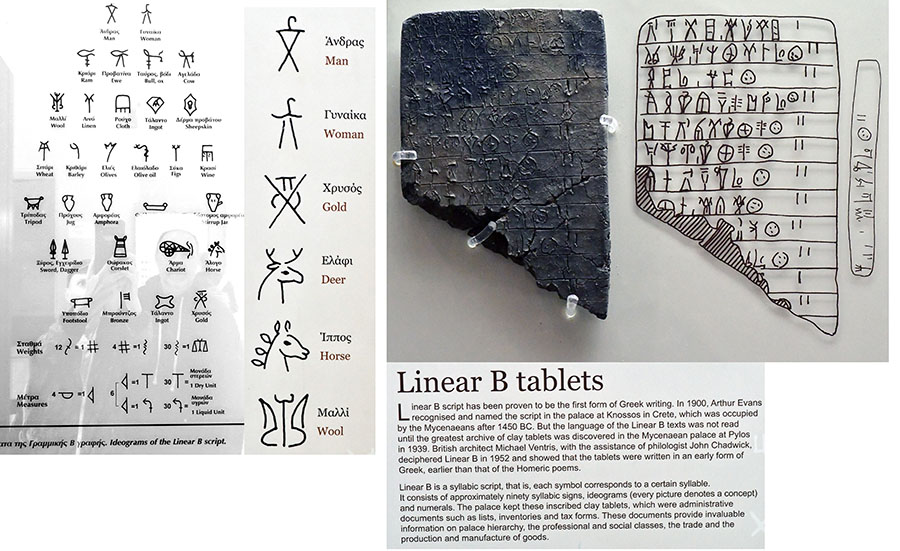
Linear B script has been proven to be the first form of Greek writing. In 1900, Arthur Evans discovered the script in the palace of Knossos in Crete, where the Myceneans lived after 1450 BC. The Linear B text wasn’t read as a language until the discovery of a large archive of clay tablets stored in the Mycenean palace at Pylos in 1939. British architect, Michael Ventris and his assistant philologist John Chadwick deciphered Linear B texts in 1952. They proved that the tablets were written in an early form of the Greek language preceding the Homeric poems.
Linear B is a syllabic script. Each symbol corresponds to a certain syllable. It consists of about 90 syllabic signs, numerals, and ideograms (every picture denotes a concept). The Palace kept its records in the form of these clay tablets, which were administrative documents, such as lists, inventory recordings, and tax forms. These ancient recordings give invaluable insight into the palace’s hierarchy, social status, professions, trade, and manufacture of goods.
Fact or Myth #7: The birthplace of Hera’s worship & a peacock
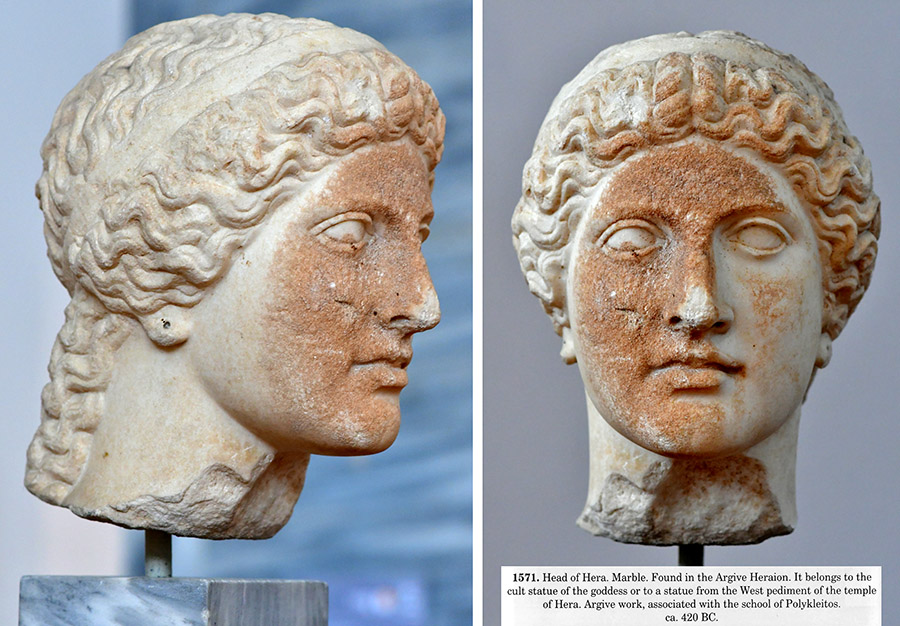
THE ARGIVE HERAION, The sanctuary of Hera near Mycenae
Hera herself claims to be the protector of Argos in Iliad IV, 50–52: "The three towns I love best are Argos, Sparta and Mycenae of the broad streets".
The sanctuary of Hera was the famous, ancient cult center that lay on a low hill between Argus and Mycenae. It was probably the birthplace of the worship of Hera in ancient Greece. The first temple of Hera was built in the 7th century BC that burned to the ground in the fire. It’s said that it’s due to neglect of the priestess Chryseie in 423 BC.
The second, the Doric temple was built to honor the goddess by the architect Eupolemos of Argus about 420-410 BC. right on a terrace below the old temple. Some parts of the 5th-century temple were preserved, including lavish sculptural decorations. The depiction of the birth of Zeus decorated the pediment of the east side of the temple. The Gigantomachy decorated the metopes of the same side. The Trojan War cycle themes dominated the west side of the temple. The west pediment had a representation of the Sack of Troy. The metopes of this side depicted the Trojan Amazonomachy. There were also some lion-shaped water spouts, relief palmettes, tendrils, and cuckoos, the bird answered to the goddess.
The colossal gold and ivory cult statue of Hera that had stood inside the temple was the work of the Argive sculptor Polydoitas. Its form is known from the depictions on coins of Argos issued in the 2nd century AD and from the descriptions of the travel writer Pausanias. * From the description in the museum in Athens.

The Peacock in Greek Mythology
The peacock was a sacred bird to Hera, Hera became jealous when Zeus would spend time with one of his many mistresses, and recruited Argus to watch her with his hundred eyes. (According to Ovid, Argus had a hundred eyes). When Argus got killed, Hera set his eyes on the peacock's tail to immortalize him. In another version of this myth, Hera turned Argus into a peacock. This bird pulled her chariot in honor of his faith to her. Juno, Roman goddess has similar to Hera status and myth.
Other fun facts about the Mycenean world:
1. The use of Seals
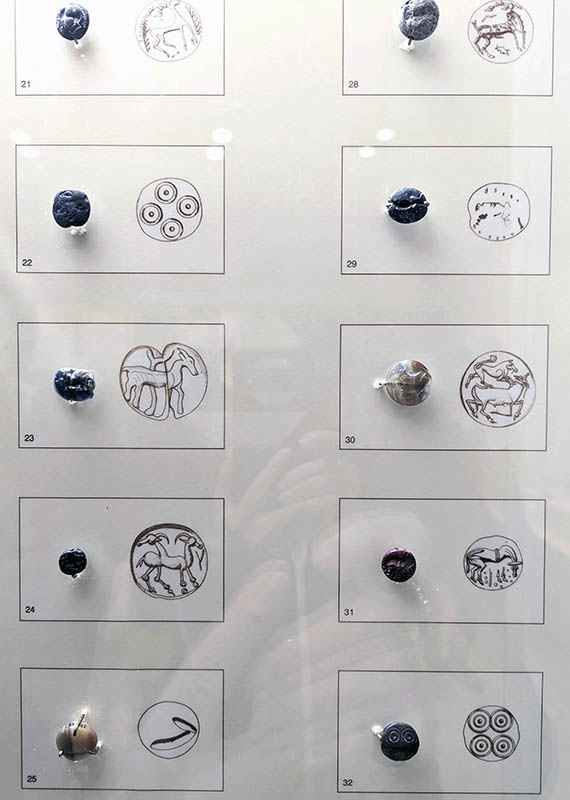
Seals appeared in the Aegean area in the Early Bronze Age (3rd millennium BC). They had a long history of use in the advanced administrative systems of the Near Eastern cultures. Their widespread, administrative use reaches its apex in the Minoan palaces.
The microscopic engraved stones and the seal rings were true works of art that were used as jewelry, votive offerings, and amulets. The seals were used alone and in combination with the clay sealings for many years, confirming the existence of goods quality control. People who owned and used them were representatives of the upper class or other authority. Although the Mycenaeans were influenced by Minoan iconography, they used the seals primarily as objects of authority, while their contribution to the central administrative system was supplementary to the clay tablets. Their rich iconographic repertoire provides valuable information concerning religious convictions, the administrative framework and the social structure. * From the museum in Heraklion, Crete
2. The status of Women in the Mycenaean World
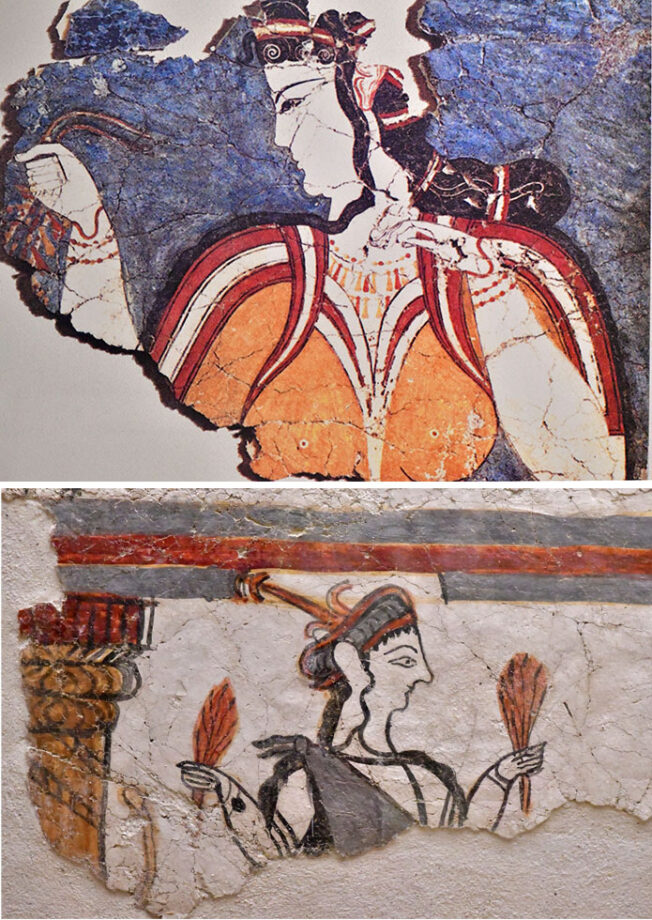
Women’s role in the Mycenaean world is suggested through iconography, precious and household objects, and the Linear B tablets. Many skills in the domestic economy that included special skills like textile-making and corn grinding belonged to slave women or female-tied workers.
There are many Linear B symbols talking about the textiles dying. The fabric was wool of different weights, to purple-red color. People worked in different stages making fabric, having separate professions for each step of the process.
The upper-class women were involved in royal activities that included the creation of personal, refined adornment pieces. The goddesses wore ornate Minoan dresses. The female priestesses played an important role in religious activities that gave them special social status.
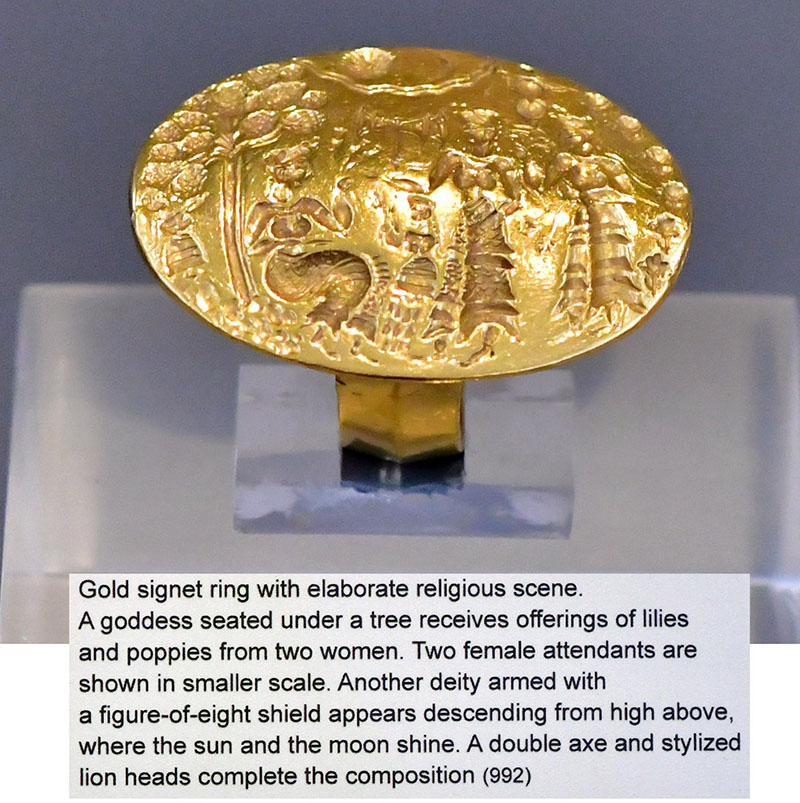
The vast majority of this information comes from the local museum & notes placed along the route in the archeological site of Mycenae, Greece that I visited in 2024. I also used some Google to write the summary of the Trojan war and alike. If you’d like to explore other fascinating archeological sites of Greece, visit the links below as I explore the archeology and art of Delphi, Holy Meteora and more.
Greek art styles
Greek art is generally divided into four major periods, each with distinct styles and characteristics:
- Geometric Period (900 – 700 BCE):
- Emerging from the Greek Dark Ages, Geometric art is characterized by its focus on geometric patterns and stylized figures.
- Pottery decoration is prominent, featuring abstract motifs like meanders, triangles, and swastikas.
- Human and animal figures are depicted in a simplified, geometric manner.
- Archaic Period (700 – 480 BCE):
- This period witnessed a shift towards more naturalistic depictions.
- Sculptors began carving figures in the nude, adhering to a rigid and idealized form known as the Archaic smile.
- Pottery decoration continued to evolve, with the introduction of the black-figure technique where figures are painted in black silhouette against a red background.
- Classical Period (480 – 323 BCE):
- Considered the pinnacle of Greek art, the Classical period emphasized balance, proportion, and realism.
- Human figures were depicted in more natural poses with a focus on ideal beauty and perfect anatomy.
- The red-figure technique dominated pottery decoration, with intricate details and narrative scenes.
- Famous Classical sculptors like Phidias and Polyclitus developed influential styles portraying gods and heroes in a majestic and harmonious way.
- Hellenistic Period (323 – 31 BCE):
- Following the conquests of Alexander the Great, Hellenistic art embraced a wider range of emotions and expressions.
- Sculptures became more dynamic and dramatic, capturing movement and individual personalities.
- Art from this period often reflected a more theatrical and emotional style.
- Genre scenes depicting everyday life gained popularity alongside mythological themes.

| The Colored Pencil Manual | How to Color Like an Artist |

